- News
- Reviews
- Bikes
- Components
- Bar tape & grips
- Bottom brackets
- Brake & gear cables
- Brake & STI levers
- Brake pads & spares
- Brakes
- Cassettes & freewheels
- Chains
- Chainsets & chainrings
- Derailleurs - front
- Derailleurs - rear
- Forks
- Gear levers & shifters
- Groupsets
- Handlebars & extensions
- Headsets
- Hubs
- Inner tubes
- Pedals
- Quick releases & skewers
- Saddles
- Seatposts
- Stems
- Wheels
- Tyres
- Tubeless valves
- Accessories
- Accessories - misc
- Computer mounts
- Bags
- Bar ends
- Bike bags & cases
- Bottle cages
- Bottles
- Cameras
- Car racks
- Child seats
- Computers
- Glasses
- GPS units
- Helmets
- Lights - front
- Lights - rear
- Lights - sets
- Locks
- Mirrors
- Mudguards
- Racks
- Pumps & CO2 inflators
- Puncture kits
- Reflectives
- Smart watches
- Stands and racks
- Trailers
- Clothing
- Health, fitness and nutrition
- Tools and workshop
- Miscellaneous
- Buyers Guides
- Features
- Forum
- Recommends
- Podcast
feature
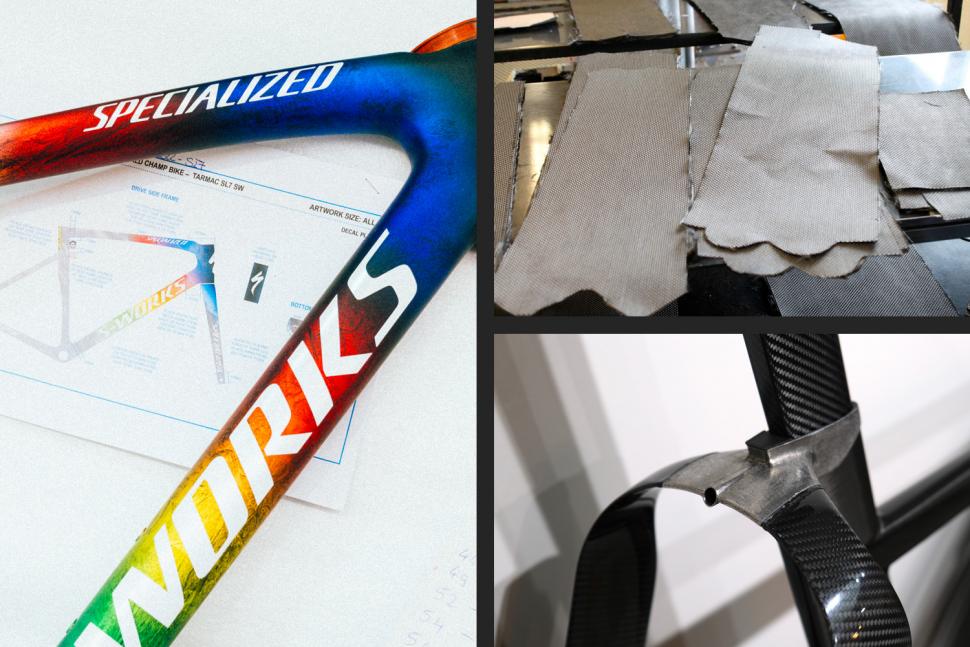 Understanding carbon bike frames May 2022
Understanding carbon bike frames May 2022Understanding carbon bike frames: what does unidirectional, woven and high-modulus fibre all mean?
Ever wondered about the differences between unidirectional or woven carbon? Unsure how 'high modulus’ fibres are used? Foggy on how compliance is actually engineered in? Check out our carbon fibre explainer to find out more about what each of these terms means, and what goes into making a bike frame.
So many terms get bandied about in launches and reviews that could really do with a little unpacking – we’ve spoken to Will Chan, manager of composites engineering at Specialized and Reggie Lund who is a R&D Engineer at Trek and asked some of the questions you might have about carbon fibre:
What actually is a carbon frame?
Even though we always talk about carbon frames, it’s never actually pure carbon - they’re always a composite material, with resins being used to bond the carbon fibres together.
There’s a couple of different ways of doing this. Currently the most commonly used construction process is to use ‘prepreg’ carbon fibre. This refers to carbon sheets that have already been impregnated with a resin and so don’t need it applied later on in the manufacturing.
> 14 of the best carbon fibre road bikes - from £1,099 to £11,600
Otherwise, the resin can be applied during the construction to dry carbon sheets. TIME, for example, has its braided carbon structure (BCS) manufacturing technique which allows the brand to incorporate the bio-based Dyneema fibres to increase the strength in the frame structure without a compromise to the stiffness or weight.
At the launch of its ADHX gravel bike, Time explained: “The high temperatures used for curing prepreg frames is above the recommended maximum for Dyneema fibres.
“By laying up dry fibres and then injecting resin at high pressure between rigid external and internal molds, air pockets and voids are eliminated."
High vs low modulus carbon fibres
The phrase that’s perhaps used most often when talking about the carbon construction of bike frames is ‘high modulus’ - but unless you have a background in material science, this terminology can be pretty opaque, so let’s unpack that a bit.
Simply put, “the modulus is the technical term for stiffness – how much it will stretch when you apply a load,” Reggie of Trek explains. “[The other] property you’re typically looking at with carbon fibre is what we call strength – how much load it can take before it breaks.”
Fibres that are both strong (won’t break) and stiff (won’t flex) would be an obvious advantage, but, like most things in life, it isn’t quite that easy.
“Generally, the higher modulus, the lower the strength of those fibres,” Will of Specialized notes.
A bit like how a tree that won’t bend in the wind will ultimately snap, a frame made only with high modulus carbon fibres would be likely to simply break.
Will continues: “In high strength areas of the frame we might use more standard and intermediate [i.e. lower modulus] fibres, and that will give us the most optimised stiffness, strength and weight in the final product.”
So a wide range of high modulus, intermediate modulus fibres and sometimes standard modulus fibres are used in all carbon bikes, and it’s all about putting the high stiffness and high strength fibres where they’re needed most.
“There’s probably a mixture of six to seven different fibres that we’re using in any high-end S-Works frame because we’re trying to optimise those characteristics of strength and stiffness very carefully,” says Will.
“When we’re developing our bikes we’ve got about 12 different load cases that we have to go through testing, and two to three stiffness requirements. All of those put different loadings on the frame in different places, so figuring out where to use more high modulus fibres is really critical.
“The whole goal for us is to meet our stiffness and strength targets at the lowest weight possible, and so by optimising where those fibres are placed we can basically tune those knobs as far as reducing the weight, or increasing the stiffness or increasing the strength."
Similarly, when Trek launched its updated Emonda in 2020, it said: "We set a [target] of under 700g for the frame and we needed a new material in order to hit that.
“OCLV 700 wasn't going to be able to do it… so we had to go out and see if there were new materials and processes available that we could leverage to attain our goal.
“From a fibre-type perspective OCLV 800 is 30% stronger than the material that we've been using in OCLV 700.”
But it’s not that OCLV 800 is just one single homogenous material – just like the OCLV 700, it still uses a combination of different fibres, some with a higher modulus and some with a higher strength, to provide the balance of properties that are needed at that lower weight.
Reggie added: “We made that jump up [in strength] but it was also a jump up in material cost too, so to use it everywhere would have increased the cost a lot and it doesn’t always make sense.”
But what is it that makes one carbon fibre stronger and another higher modulus? Well, all carbon fibres start from some sort of polymer – which is essentially just a long chain of carbon atoms with other elements, such as hydrogen and oxygen, poking off the sides. The polymer is then heat-treated at very high temperatures, from around 1,500°C to 2,000°C.
“What that does is it gets rid of all of those oxygen and hydrogen atoms and what you’re left with is just the carbon atoms which have a very good bond strength to each other,” Will explains.
It’s this heat-treating process that determines whether a carbon fibre is high modulus or low modulus. “The higher the temperature [and] the longer you heat treat them for, [that] will make the fibre even more pure and have a better carbon crystalline structure.”
This gives the carbon a higher modulus but with the temperatures and durations involved, it’s also more costly too.
Unidirectional and woven carbon
Fundamentally, unidirectional carbon has all the fibres running parallel to each other, all pointing in the same, single direction – a uni direction, if you will. Woven fabrics, on the other hand, will have carbon fibres that run in at least two directions.
Woven carbon fabrics may look aesthetically pleasing, but it’s important to understand their strengths and weaknesses in different applications.
“Each strand of fibre is undulating as it's going over and under the fibres that cross its track, and that actually reduces the performance of those fibres,” Will explains. All those slight bends as the carbon fibres weave over and under each other compromise the strength of the fibres compared to those just running dead straight.
“When we're looking at making the highest performance bikes, in terms of stiffness, strength and weight, unidirectional fibres are primarily what is used because those fibres don't have that crimping effect.”
Unidirectional carbon fibres also tend to give better scope for really tailoring the properties of the bike, compared to that of woven carbon. “With a cloth [woven fabric] you start with fibres in the zero direction and fibres in the 90 direction,” Reggie points out, giving that classic ‘chess-board’ look.
But this means that only half of the fibres are pointing in each of those two directions – which makes it less strong in a given direction than a sheet of carbon with all the fibres pointing the same way.
“Let’s say you have a stack of 10 plies [i.e. ‘layers’ or ‘sheets’] and you need to add one more ply [layer] to make it pass testing.
“If you had a cloth, it may not pass because you only have half of those [fibres pointing in the direction] you wanted for that last layer. But if you had one more ply of unidirectional carbon, you get all the fibres you wanted in that one direction you were trying to increase it in. With the cloth, you’d actually have to add a second layer which is adding more weight to the product.”
Woven carbon also goes through more processing because you have to weave it together, and Will points out that it costs more to do that, and at that lower performance.
That’s not to say that Specialized and Trek won’t use woven fabrics. A woven fabric is said to machine a little bit better and so it can be useful if drilling holes for water bottle bosses, for example.
Trek explains: “If you put a hole through that quilt, all of those overlapping fibres are going to be rebounding and that holds them from pulling itself apart. Whereas if you put a hole through unidirectional fibre, it can easily split and then that split just runs down that line.”
The woven fabrics are also a little bit thicker so if it's in an area where the thickness needs to be increased to achieve the desired strength characteristics, Will says that he might use woven fabrics to increase the thickness in those local areas.
Woven fabrics also have the benefit of being able to drape over a 3D contour without the fibres spreading out, whereas with unidirectional fibres in some cases you might run into those sorts of situations.
Trek explains: “When unidirectional fibre tries to spread out over a complex curvature sometimes it has to spread apart and you get gaps.
“Whereas with cloth, because it’s already quilted together, when it spreads out it’s not going to separate and those fibres can move just a little bit relative to each other and so that makes it easier to conform to a complex shape.”
Layup schedule
As well as selecting fibre grades which balance the strength and stiffness qualities you’re after, the orientation and placement of the fibres are highly important for getting the best performance out of the materials.
“The layup schedule is essentially our instruction manual on how all of the individual plies [‘layers’ or ‘sheets’] go together to create the frame,” Will sums up.
Trek says: “What engineers spend most of our time doing is really dialling in what direction we want those fibres, so [the frame] can take the loading that we want without needing to add any extra material.”
Developing the layup schedules is the area Will spends most of his time working on: “There's literally an infinite number of possibilities as far as the size and placement and the fibre angles that you want to place on the entire frame to optimise the use of those fibres as much as possible.
“On any given frame, when you have 600 individual plies and there are seven different grades of fibres that you can use, it's all about how those are stacked in any given area of the frame.
“Those unidirectional fibres might be pre-plied in plus or minus 90 degrees, 45 degrees, or 20 degrees, or they might just all be aligned as zeros, amongst other fibre angles. An individual ply might be doing some work for stiffness, but it's also doing some work for strength, so trying to get the best use of every ply in that layup schedule is highly critical.”
In Specialized’s S-Works Roubaix, for example, where the down tube, bottom bracket, and top tube utilise a higher mixture of E390 high modulus carbon fibre, “which is stiffer, in order to prevent bending flex for better power transfer,” says Specialized, “this area uses mostly zero-degree-angle fibres to make it extremely stiff [in that direction].”
So, what’s the difference between Specialized’s 10r and 12r carbon frames?
“We may have two different layups for a given model for a Tarmac or Roubaix, and we'll call those 10r and 12r as a way to separate them,” Will notes. “The differences between that 10r and 12r layup is primarily the mixture of fibres that we use.”
The 12r frame uses more of the higher modulus fibres that also cost significantly more, and Will says that helps them meet those stiffness targets but at a lower weight.
With the 10r, Will says that they can achieve the same stiffness targets but using standard and intermediate modulus fibres, and some high modulus fibres too.
“We'll reach that [same stiffness target] with a slightly higher weight penalty and while still keeping the ride characteristics the same,” he says.
Engineering compliance
Whilst we’ve looked at how to optimise the strength and stiffness of a frame, what about when it comes to providing a bit of extra comfort? You’ve got to take the same principles, but just apply them differently.
One way of adding compliance to a specific area would be to take advantage of different grades of carbon fibre.
“If you were looking for a more compliant feel, standard modulus fibres would be a better choice than high modulus fibres,” Will notes.
It’s refreshing to hear that increasing the comfort actually uses cheaper carbon than the more expensive higher modulus fibres used in race frames – you almost expect any improvement to come with a clear premium.
But although the choice of fibres does make a difference, Will says that it’s the angle of the fibres that has the most significant effect on the compliance: “If you're trying to maximise stiffness and strength, you want those fibre angles to be as strictly aligned with that load path.
“But we can also align those fibres, at 10 degrees, 20 degrees, 45 degrees or even 90 degrees to that load path, and that will significantly affect the stiffness along that axis.”
Previously there was not a very good correlation with stiffness across sizes, as bike manufacturers would put a lot of development time into size 56cm frames (the middle size) with the larger sizes and smaller sizes just being extensions of that middle layup.
But Will says this is far from ideal: “What you'd end up having is large size riders riding these sort of noodly frames and these small riders riding extremely stiff frames.”
To avoid this, Specialized has what it calls ‘rider first’ engineering: “We have specific stiffness targets for those larger size frames, those average size frames and the smallest size frames, and when we're developing any given bike model we actually spend just as much time developing the layups to hit those stiffness targets for the smallest riders, as well as the largest riders.”
“We also take that a step further than just layup differences. Even the physical tube shapes are optimised for the largest and smallest sizes.
“The Stumpjumper EVO [mountain bike] is a good example of that where the dimensions of the top tube and down tube of the S1 and S6 sizes can vary by up to 6 to 10mm – so even as composites engineers we are also working very closely with our designers and analysis team from the drawing board to optimise that final result for every size.”
Resins
While there are the characteristics of the carbon fibres to consider, another key ingredient is the resin. This is a liquid polymer that bonds the fibres together to hold a carbon frame in shape.
“For a given manufacturer, even though you might have six to seven different fibre grades, they will be using the same type of resin, and that's important because during the curing process – where we elevate the temperature of the carbon fibre prepreg to hardens the resin – we want all of the resin in that pre-form to be curing at the same rate,” Will explains.
Specialized uses an epoxy resin, as Will says it gives them the highest high strength of most commonly used resin matrix systems.
“There are some additives, some tougheners and some elasticisers that are maybe mixed in to try to improve some of the performance, but I would emphasise that the resin system is not the most critical.
“What is critical is how that resin bonds with the individual fibres, and that interface between the fibres and resin is really critical, especially for the strength of our composite structures,” Will notes. “Having a very compatible resin with the fibre surface treatments is by far the most critical aspect of finding a good resin formula.”
Anna has been hooked on bikes ever since her youthful beginnings at Hillingdon Cycle Circuit. As an avid road and track racer, she reached the heady heights of a ProCyclingStats profile before leaving for university. Having now completed an MA in Multimedia Journalism, she’s hoping to add some (more successful) results. Although her greatest wish is for the broader acceptance of wearing funky cycling socks over the top of leg warmers.
Latest Comments
- aramaerospace 26 min 11 sec ago
Increased drive friction and power loss:...
- Geoff H 2 hours 33 min ago
I was really enjoying the article until I came to the price!
- OldRidgeback 3 hours 26 min ago
I have a very old MTB (guess what make) that I'll happily leave locked at the train station or shops or whatever. The fairly new Trek MTB or...
- TheBillder 5 hours 58 sec ago
Dualling that stretch of the A7 will allow hard-pressed motorists to travel very slightly faster between the rock that is the Sherriffhall...
- BikingBud 5 hours 8 min ago
I refer to being an engineer only to emphasise my consideration of the logical approach that should be applied in the justice system, rather than...
- David9694 6 hours 39 min ago
Parking fail as car left teetering on top of stone wall Oh dear https://www.devonlive.com/news/local-news/parking-fail-car-left-teeterin...
- jaymack 7 hours 57 min ago
We must be related!
- The_Ewan 9 hours 27 min ago
But why worry if a few people do? It's just not a big deal....
- Tom_77 10 hours 31 min ago
Tempted to get him a sweary birthday cake like in The Thick Of It....
- Bigtwin 10 hours 59 min ago
Didn't happen did it? They came into my shop a couple of years back and said it was "on the way", but never heard anything more.
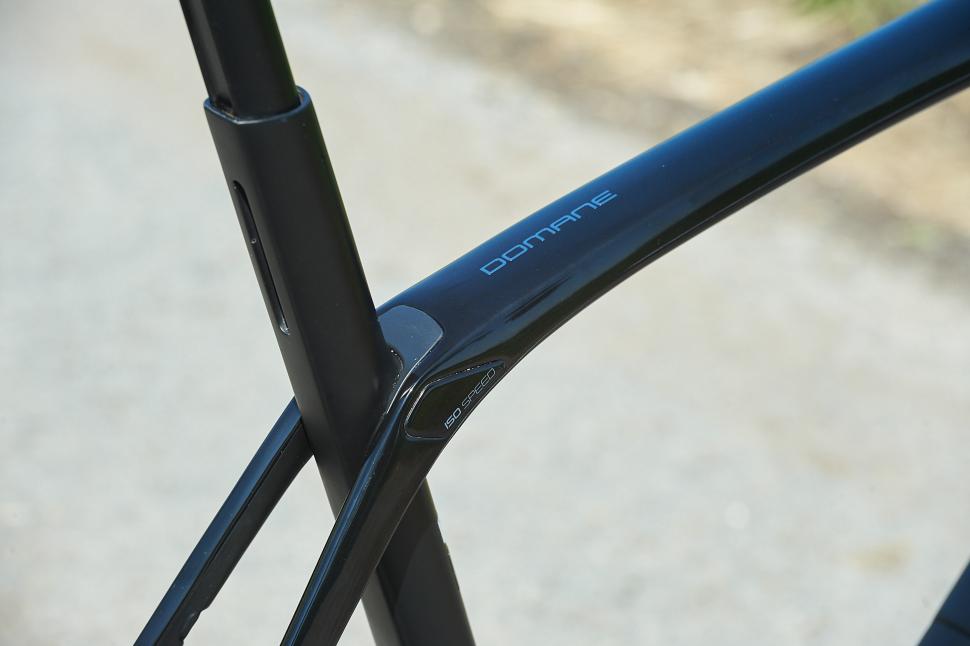
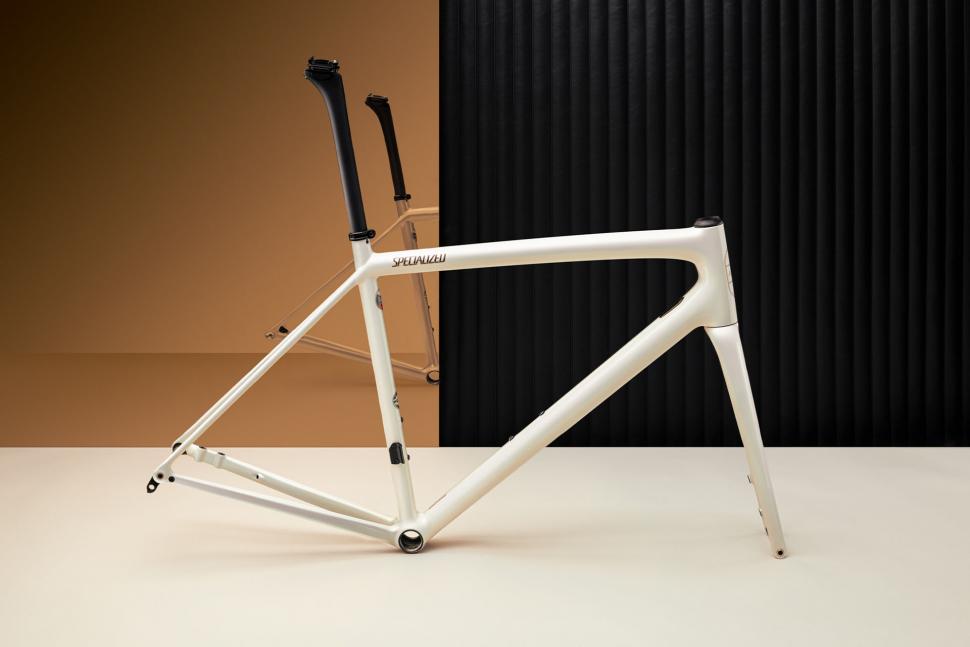



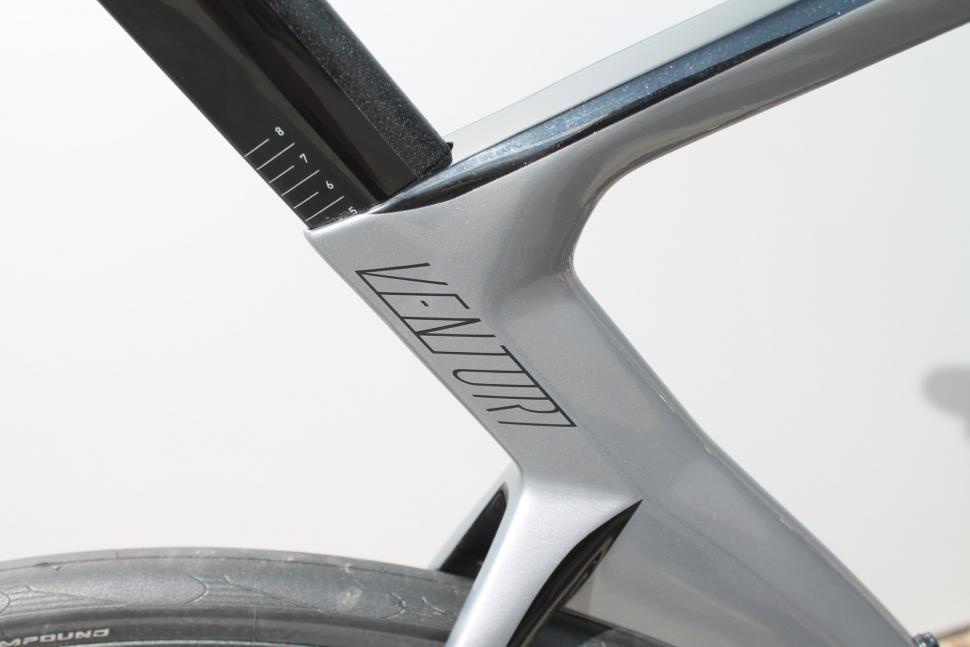


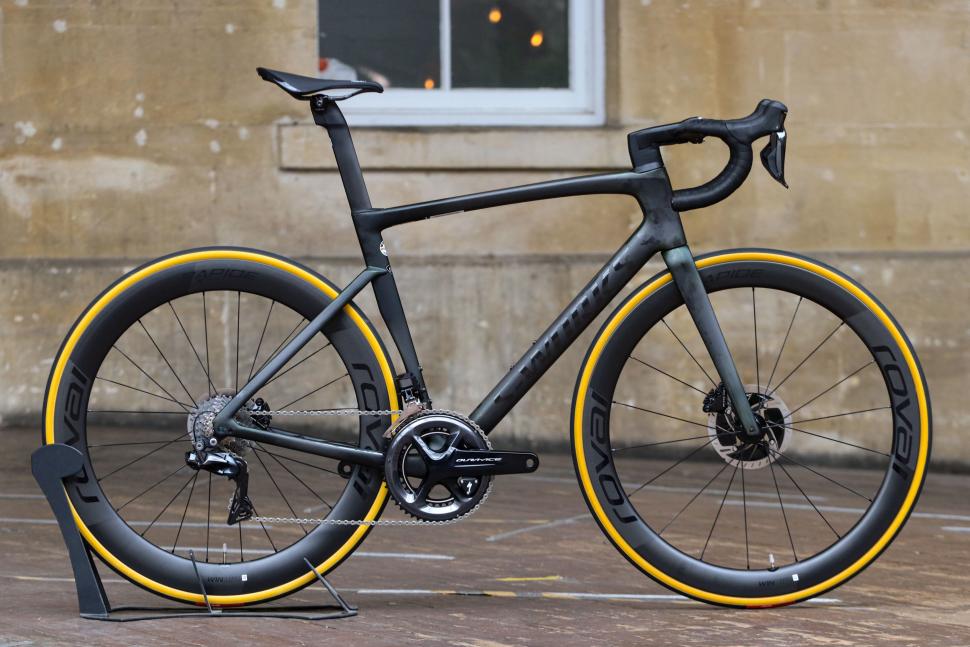

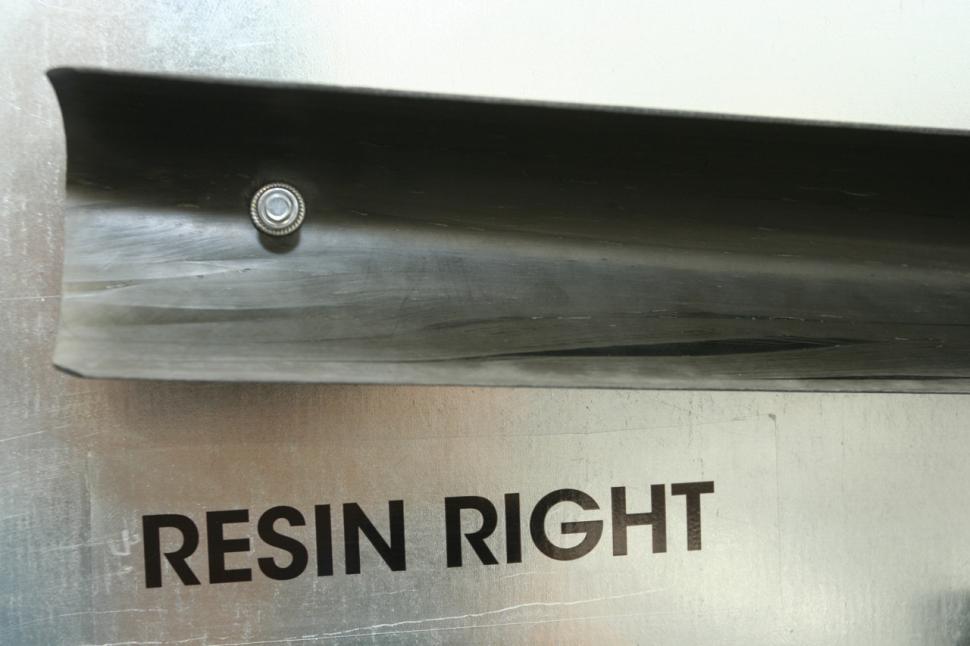

Add new comment
6 comments
'A bit like how a tree that won’t bend in the wind will ultimately snap, a frame made only with high modulus carbon fibres would be likely to simply break.'
Hang on a sec! A bike frame is made up of triangles that can't possibly flex - so said the stupid american who refuses to believe that CF can be more compliant that aluminium.
How dare these scientists come along and debunk that nonsense.


Let it go already.
Why?
Lots of comments on the previous article rubbishing what I had written and here you have real information confirming what I claimed.
Should I only post if you and the Cadre agree with me?
Because it was very long and tedious the first time round and doesn't add anything to anyone's life to be subjected to it all over again.
I don't know who this Cadre person is, or what their view is, but personally I don't have an opinion either way, nor do I care very much - I just think there's better things we could all be doing.
Thank you for confirming what I wrote. You find it tedious therefore I shouldn't post. No one forced you to read or respond!
And what about brushed Egyptian?